Key takeaways:
- Community housing development focuses on building affordable and sustainable living options while fostering a sense of belonging and security within communities.
- Zoning laws significantly influence community growth, often balancing property values and neighborhood character, while impacting affordable housing availability.
- Successful zoning negotiations require building relationships with stakeholders, thorough preparation, and patience, which can lead to more collaborative outcomes.
- Transparency and adaptability are crucial; engaging with community needs and sharing project details can build trust and strengthen connections in development processes.
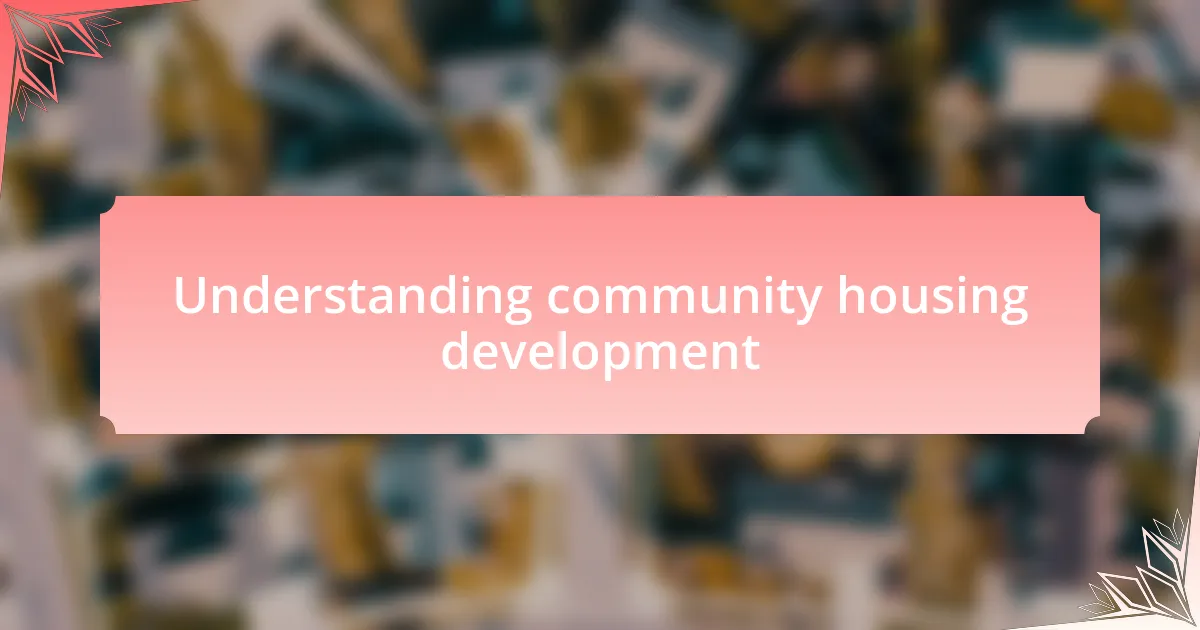
Understanding community housing development
Community housing development is a multifaceted approach that focuses on creating affordable and sustainable living options for various demographics, including low-income families, seniors, and individuals with disabilities. I remember attending a community meeting where someone shared their struggles to find suitable housing. It struck me how essential these developments are in fostering a sense of belonging and security.
Navigating zoning laws can often feel overwhelming, but understanding them is crucial for successful community housing initiatives. As I dug deeper into the regulations in my area, I realized that zoning can make or break a housing project. Have you ever thought about how a simple zoning change can transform a neighborhood?
Ultimately, community housing development is about more than just building structures; it’s about nurturing communities. I often reflect on the friendships forged in these communal spaces and how they contribute to social cohesion. When we invest in community housing, we are not just investing in homes; we are investing in people’s lives and their future.
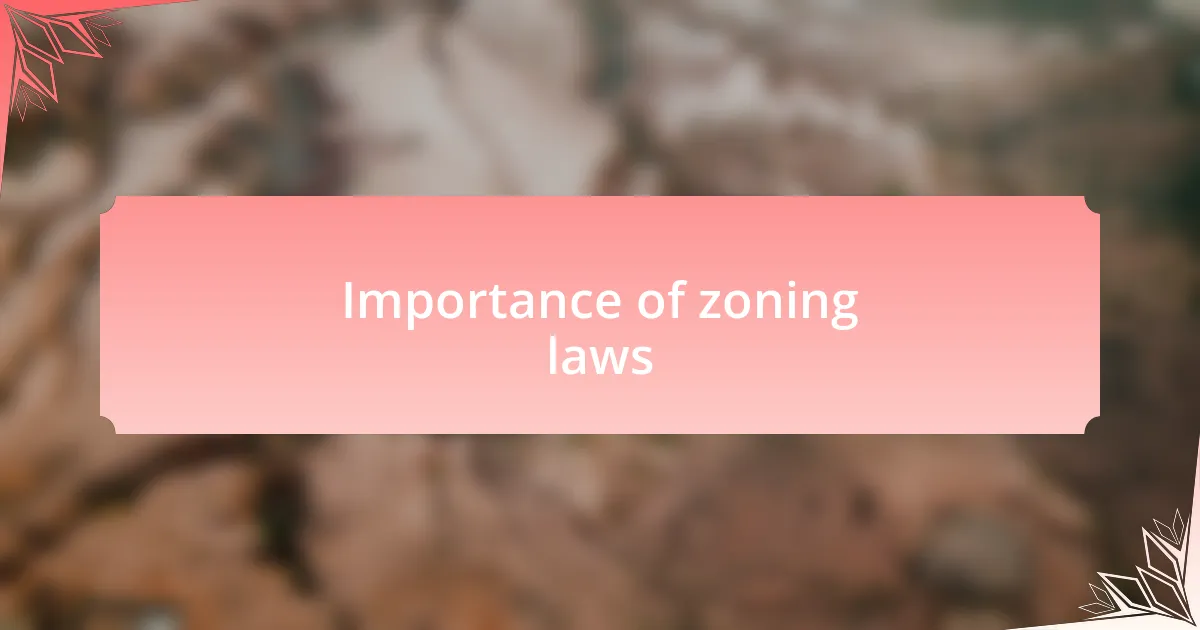
Importance of zoning laws
Zoning laws play a pivotal role in shaping the future of our communities. I recall a time when a proposed development faced significant opposition due to concerns about how it would change the neighborhood’s character. It made me realize that these laws protect not just property values, but also the essence of a community. Where would we be without the guidelines that ensure balanced growth and harmony among residential, commercial, and agricultural spaces?
Moreover, zoning laws can actively encourage or discourage community housing efforts. For example, I once came across a zoning ordinance that limited multi-family housing in a suburban neighborhood. It struck me how such restrictions might inadvertently fuel housing shortages. Isn’t it fascinating how something as seemingly technical as zoning can have real-life implications on the availability of affordable housing?
Understanding these regulations is essential for anyone interested in community development. I’ve seen firsthand how engaging with local zoning boards can amplify community voices in decision-making. Have you ever participated in such a process? It can be empowering to influence local policies that directly impact where and how people live. By advocating for smart, inclusive zoning changes, we can help create neighborhoods that serve everyone, fostering true community resilience.
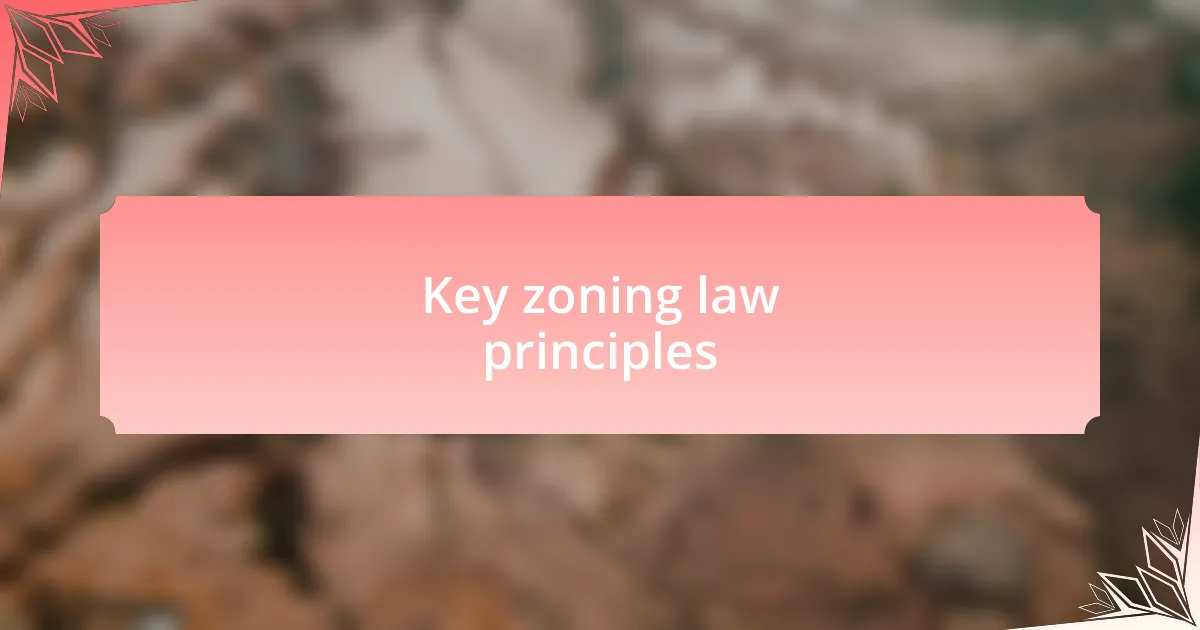
Key zoning law principles
Zoning laws are grounded in several key principles that aim to foster organized community development. One crucial principle is land use regulation, which dictates how land can be utilized, from residential to commercial or agricultural purposes. I remember attending a town hall meeting where a passionate local resident argued for more green spaces, highlighting how zoning could pave the way for parks instead of more congested buildings. It struck me how such discussions reflect the heart of what zoning is about: establishing a balance that meets community needs.
Another important principle is the concept of density control. This refers to limitations on the number of housing units on a given plot, which directly impacts how densely populated an area can become. I’ve witnessed neighborhoods transform when developers push for higher density, often raising concerns among existing residents about overcrowding and strain on local resources. Have you ever thought about how many residents can comfortably coexist in a space? These decisions shape not just the landscape but the day-to-day lives of the people who inhabit those areas.
Lastly, zoning encompasses the principle of protective measures, safeguarding the community’s unique character and preventing incompatible uses from encroaching on residential areas. For instance, I once saw a proposed operation for a commercial facility near a quiet neighborhood, and residents quickly mobilized against it. Their pushback made me realize that protecting community identity often starts with understanding and advocating for existing zoning laws. How can we ensure that our communities remain true to their roots? It’s a continuous dialogue that challenges us to engage actively with the regulations that govern our lives.
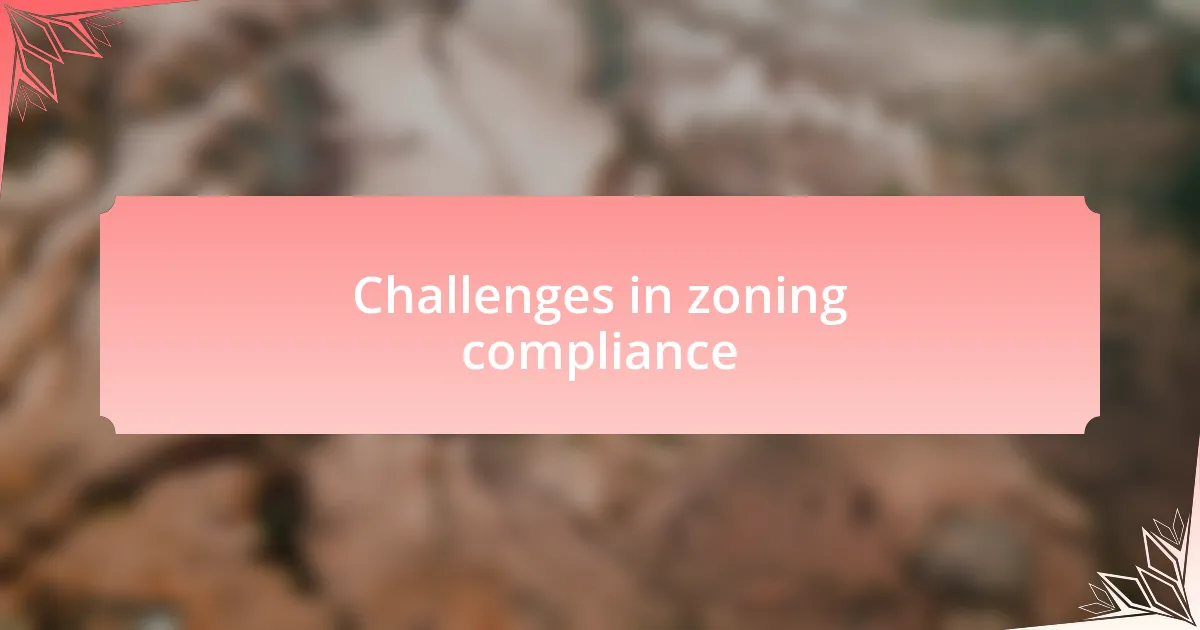
Challenges in zoning compliance
Zoning compliance often presents a maze of regulations and paperwork that can be daunting for both developers and community members. I recall meeting a local developer who spent months trying to navigate zoning codes just to secure a permit for a small affordable housing project. It was eye-opening to see how complicated legal language and bureaucratic procedures can stifle creative solutions to housing shortages.
Another challenge lies in the disparity between zoning regulations and community needs. For example, during a neighborhood planning workshop, participants expressed strong desires for mixed-use developments that could foster community interaction. Yet, many found themselves at odds with existing zoning laws that prioritized single-use areas. I couldn’t help but wonder, how often do regulations truly reflect the evolving aspirations of the community?
Lastly, the dynamic nature of zoning laws can make compliance particularly tricky. While attending an advocacy meeting, I listened as residents voiced frustration over sudden changes to zoning ordinances that affected their neighborhoods without notice. It struck me that such unpredictability could erode trust in local government. How can we work to create a more transparent process that keeps everyone informed and engaged? This ongoing dilemma underscores the importance of a collaborative approach in navigating the complexities of zoning compliance.

My experiences with zoning applications
Navigating zoning applications has been a mixed bag of experiences for me. I once submitted an application for a community garden project, thinking it would be a straightforward process. Instead, I was met with layers of requirements that felt like running a marathon without a finish line in sight. Did I underestimate the bureaucracy, or was there more to the system than I anticipated?
On another occasion, I found myself collaborating with local allies to advocate for a small-scale housing initiative. The discussions were invigorating, but we soon realized that our vision clashed with existing zoning restrictions. It was frustrating to see a grassroots effort stifled by outdated regulations that seemed disconnected from current community needs. Have you ever felt that sense of urgency to create change, only to hit a wall of red tape?
There have been moments of clarity amidst the chaos, particularly when I learned to parse through the zoning code with a fine-tooth comb. I remember attending a workshop where seasoned planners shared their tips—turns out, understanding the nuances of zoning laws can empower you to present your case more effectively. What struck me was how much more confident I felt once I grasped these details. It’s a reminder that even the complex world of zoning can become clearer with the right tools and community support.
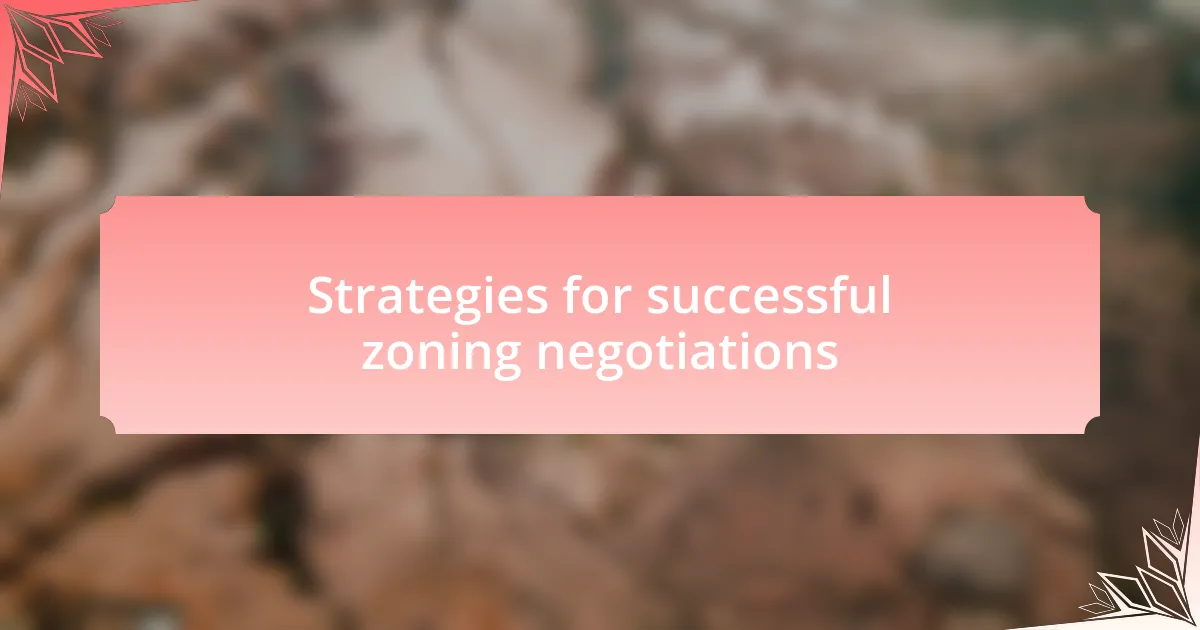
Strategies for successful zoning negotiations
Successful zoning negotiations often hinge on building relationships with key stakeholders. I recall my first meeting with a local council member; it felt like walking into a room full of strangers. However, by approaching them with a genuine interest in their perspectives and needs, I discovered common ground that turned a potential conflict into a collaborative discussion. Isn’t it amazing how a simple conversation can set the stage for a win-win situation?
Another strategy I highly recommend is to prepare thoroughly before negotiations. I once spent countless hours drafting a comprehensive presentation that highlighted the benefits of my project for the community. Presenting these clear, data-driven points not only garnered support but also made opposing voices seem less intimidating. It’s essential to anticipate objections and be ready with counterarguments; this preparation can significantly shift the dialogue in your favor.
Lastly, patience is crucial throughout the zoning process. During a challenging negotiation on a multi-use development, I learned firsthand that pushing too hard can backfire. Instead, I focused on listening to the concerns raised and began to address them one by one. This approach transformed the negotiation from adversarial to collaborative, and ultimately led to a more favorable outcome. Have you found that sometimes slowing down can lead to faster progress?

Lessons learned from my journey
Navigating the complexities of zoning laws has taught me the importance of adaptability. I vividly remember a situation where my original proposal faced unexpected opposition. Instead of clinging to my initial vision, I pivoted and incorporated community feedback. This not only helped me find a more acceptable solution but also strengthened my connection to the residents. Have you ever had to change your course to align more closely with the needs of others?
Another significant lesson I learned is the value of transparency. In a previous negotiation, I chose to share every detail about the project with stakeholders, including potential drawbacks. Initially, I was apprehensive about revealing too much, fearing it would turn people against my proposal. But to my surprise, this openness fostered trust and made everyone feel like a part of the journey. It’s remarkable how honesty can transform skepticism into support.
Finally, I discovered that understanding local history and culture plays a pivotal role in zoning discussions. During one project, I spent time learning about the neighborhood’s legacy and the concerns rooted in its past. This knowledge not only informed my approach but also resonated deeply with the community members I engaged with. They felt that their story was acknowledged and respected. Isn’t it incredible how connecting with a place can pave the way for successful collaboration?